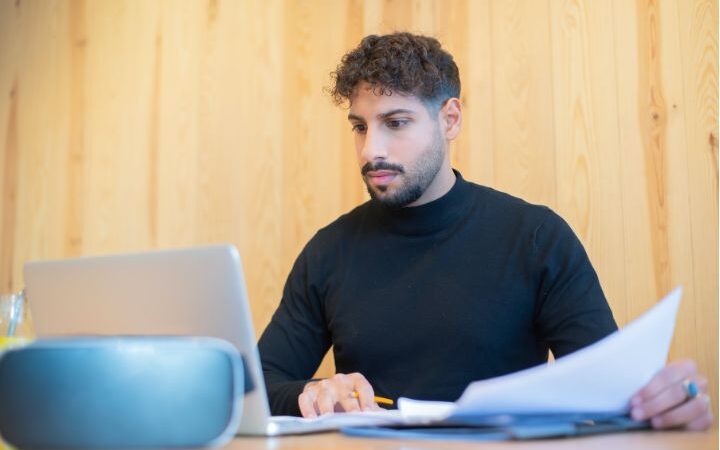The Benefits Of A DAM System For Tech Companies

Coordinating marketing and advertising efforts at a tech company can be chaotic due to constant changing, adapting, and optimizing of efforts. While tech companies focus on developing innovative products, services, and even culture, processes around content and asset production and organization may fall to the wayside.
A digital asset management system (DAM) is a type of software that can store, share, and organize all your digital assets in one location, including images, audio files, videos, documents, or other media. Virtually every business can benefit from having a DAM system, including tech companies, such as those involved with digital electronics, software, internet-related services, or others.
Here is a list of the top six benefits, particularly for tech company marketing and creative teams:
Table of Contents
Top Benefits of A DAM System For Tech
Supports Content Marketing
Content marketing is a buzzword that’s now been around for years, but it’s still one of the best techniques to generate new sales and retain existing customers. This is because digital content no longer just means articles or newsletters. Content now includes images, videos, audio, blog articles, whitepapers, case studies, and other resources.
Tech organizations likely have a number of ways they enact content marketing tactics across channels, and a DAM can be the central repository for those assets. Keeping your assets connected and accessible is important, especially as content marketing efforts will continue to grow and expand in tech and across other industries.
Improves Communication And Collaboration
Many tech companies now employ remote employees, and a DAM system can make it easier and more efficient for these teams to work together. Through a DAM, everyone can be kept up to speed on current initiatives. It allows for easier communication with colleagues or clients about changes or updates, and everyone can see these changes/updates directly in the DAM.
DAM systems allow teams to add comments and/or share thoughts with rest of the team in the system, eliminating the need for back-and-forth email communication. It can also integrate with other systems your team may already use, making it easier to share assets, maintain version control, provide edits, approve content, and more. All of this helps reduce the time it takes to complete a project, saving the company money and even generating revenue faster.
Assets Are Secure
A lot of assets and content tech companies use and share is proprietary and must be stored securely. Without a DAM, you’d likely have to store assets in cloud storage or physical drives, which isn’t secure or reliable, is difficult to search and organize, and difficult to share assets with others from.
However, with a DAM, you don’t have to worry about encrypting or protecting files. Instead, the system protects the assets in a secure storage center, as well as within channels they are sent through via private download links or public facing galleries.
If that’s not enough, your team can add additional encryption and security protocols through the software without needing an additional third-party program. This also helps keeps assets protected against virtual hackers and viruses.
Keeps Everything Organized
A DAM allows your teams to easily label and organize assets in folders. You can add keywords, categories, and subcategories to each file or group of files, which allows for easy searching, identifying, and sharing. This also saves space so your server will be faster, and you won’t have to delete or archive files.
Using a DAM also allows for more organized and efficient processes. Your teams can create review and editing processes, reduce bottlenecks of sharing and approvals, and ensure only those with editing and/or viewing permissions can take appropriate actions so you know who is doing what to which asset.
Allows For Consistency And Control
Maintaining efficiency while remaining consistent with branding and content efforts is key growth of a business. Tech employees need quick and easy access to brand and other approved digital assets throughout the asset’s life cycle. Using a DAM, your organization can track who views and edits files, as well as the file origin, technical specifications, copyrights and restrictions, and other information in the event you must share or reuse the files in the future. Creative teams can also modify or customize files based on your or your client’s needs.
Plus, a DAM system allows you to track how an asset is used. This helps with reputation maintenance, or only posting approved content that is standard, high-quality, and on brand. As additional security, DAM systems allow you to display usage restrictions for users and store copyright information.
Tracking And Reporting Capabilities
On top of being able to view system usage, you can use metrics and reporting to analyze which assets within the system provide higher (or lower) return on investment. Then, you can improve the low ROI assets through optimizations or modifications, enabling them to work harder for your organization. This can help reduce overall company expenses and increase creative production.
DAM systems also make knowledge sharing easier, helping to guide protocol for where to find or share information between teams and departments. Not only can this be performance of assets, but also templates, roadmaps, presentations, best practices, and more. Allowing your teams insight into these reports and tracking can help ensure continued alignment throughout the organization.
How To Choose the Best DAM For Your Company
Not all DAM systems are created equal, so a few things you’ll want to consider are:
- What assets you have and what they will be used for
- The security needed for your assets
- What other systems/platforms may need to be integrated with a DAM (for example, a content managements system, design software, or social media software)
Start by understanding the challenges with asset management in your company. Is it that files are saved on different servers? They have restricted access? Duplications and version deviations make brand consistency difficult? Does your team know what exists and how to find it?
Next, research what DAM functionality you may need, such as cloud storage, artificial intelligence capabilities, search functionality, file format limitations, taxonomy, metadata, version control, reporting, and more. Then, you’ll determine your DAM options. Take the time to do a thorough analysis and choose a system that works for you and your team. This is an investment in your company and employees, so it’s important to choose one that suits your needs.






